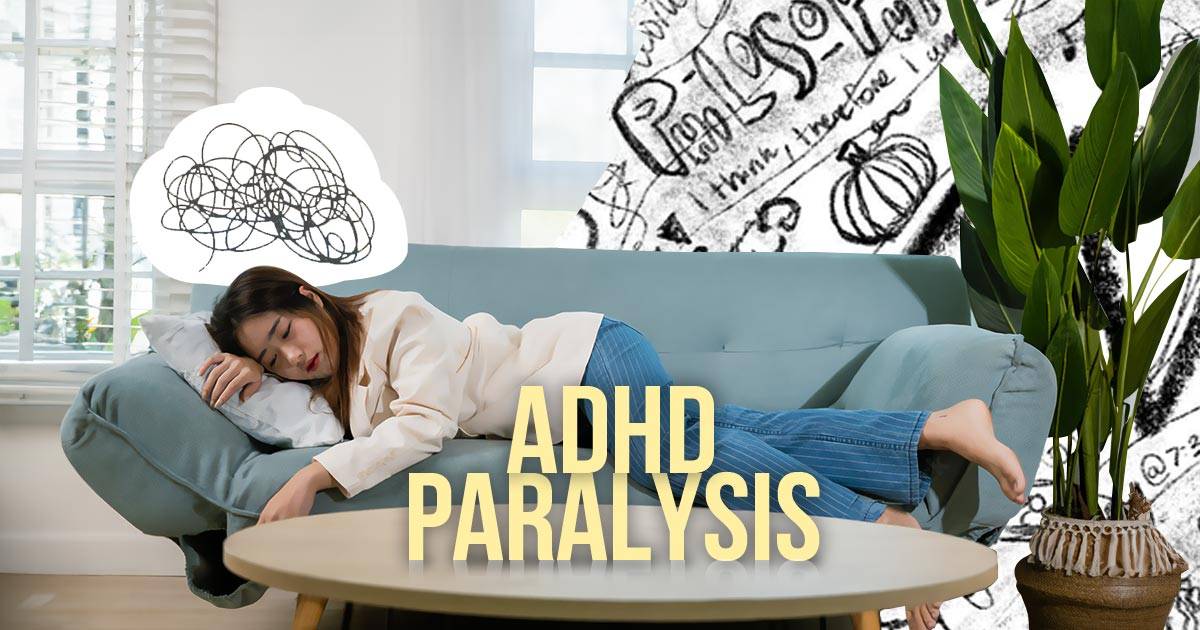ADHD Paralysis: What It Is, How to Recognize It & Strategies for Overcoming It

Attention-Deficit/Hyperactivity Disorder (ADHD) is a common condition that affects millions of people around the world, including both kids and adults. In the United States, about 8.4% of children and 2.5% of adults have been diagnosed with ADHD. This disorder can make it hard for people to concentrate, handle daily tasks, and maintain good relationships.
People with ADHD often struggle with being inattentive, overly active, and impulsive. But there’s also a less well-known issue called ADHD paralysis, which happens when someone feels so overwhelmed that they can’t start or finish tasks. To manage ADHD symptoms, people often use a mix of medication, therapy, lifestyle adjustments, and support. Recognizing and tackling specific symptoms, like paralysis, is important for improving their quality of life.
Understanding ADHD Paralysis: Is It a Real Symptom?
ADHD paralysis is what many people with ADHD call those times when they feel too overwhelmed to start tasks or make decisions. While doctors don’t officially list it as a symptom, it’s a real issue for many. This feeling of being stuck can make focusing and getting things done very hard, leading to stress and frustration.
Causes of ADHD Paralysis
- Too Many Choices: When there are too many options, it can be tough for the brain to decide on one. This can leave you at a standstill, unable to start or finish tasks.
- Sensory Overload: Lots of noise, bright lights, or too much going on around you can overwhelm your senses. This overload makes it hard to think clearly and respond to what’s happening.
- Emotional Stress: Feeling stressed or anxious can lead to ADHD paralysis. When emotions are high, it can be hard to think straight and make decisions, leaving you feeling stuck.
- Task Overwhelm: Big tasks without clear steps can cause paralysis. When a task seems too large or complex, it can feel impossible to start, creating a mental block.
- Perfectionism: Wanting everything to be perfect can stop you in your tracks. The fear of not doing something perfectly can prevent you from even beginning a task because the pressure feels too much.
You can learn how to control these triggers by being aware of them. Breaking tasks into smaller steps, minimizing distractions, and using stress-relief techniques can help. Recognizing what causes ADHD paralysis can help you find ways to move past it and improve your ability to tackle tasks.
Overcoming ADHD Paralysis: Treatment and Management
Getting out of ADHD paralysis can feel challenging, but there are several strategies that can help you regain control and move forward.
Break Down Tasks
Tackling a big project all at once can be daunting. Try breaking it into smaller, bite-sized tasks. For example, if you need to write a report, start by gathering your materials, then outline the main points, and finally, write each section separately. This approach makes the workload feel lighter and helps you get started without feeling overwhelmed.
Set Short Goals
Use a timer to concentrate on a task for a short period, like 15 or 20 minutes. This technique, known as the Pomodoro Technique, encourages you to work intensely for those minutes and then take a short break. It helps in building focus and gradually increases your ability to concentrate over time.
Stay Organized
Keeping a planner or using a digital app can help you track your tasks, appointments, and deadlines. By checking your schedule daily, you can prioritize what needs to be done first. A consistent routine reduces decision fatigue, making your day-to-day activities feel more manageable.
Take Breaks
Regular breaks are essential to recharge your mind. During these breaks, activities like deep breathing, stretching, or walking can make a difference. Practicing mindfulness, even if just for a few minutes, can help clear your mind and reduce stress, which in turn improves your ability to focus when you return to work.
Know Your Triggers
Reflect on what situations tend to make you freeze or feel stuck. Is it a messy workspace, too many choices, or pressing deadlines? Once you identify these triggers, you can plan ways to avoid them, such as cleaning your desk regularly or simplifying choices to reduce stress.
Live Healthily
A healthy lifestyle plays a crucial role in managing ADHD symptoms. Engage in regular physical activity, which boosts endorphins and improves mood. Eating balanced meals ensures you have steady energy levels throughout the day. Also, prioritize sleep to help your brain function at its best, making it easier to tackle tasks.
Get Help
Seeking support from mental health professionals can provide you with specific strategies tailored to your needs. Therapists can help you understand your ADHD better and offer coping techniques. Consistently applying these strategies can make episodes of ADHD paralysis shorter and less frequent.
ADHD paralysis can vary greatly, sometimes lasting just a few minutes, while at other times it may extend into hours. The key to overcoming these challenging moments lies in integrating practical strategies into your everyday life. By breaking tasks into smaller, manageable steps, staying organized, and recognizing your personal triggers, you can gain better control over your day. Remember, progress might be gradual, but each step you take is a step towards greater focus and productivity.
Embrace these changes with patience and positivity, and you’ll find yourself more empowered and capable of handling whatever comes your way. Keep pushing forward, and you’ll create a daily routine that supports a more productive and fulfilling life.
